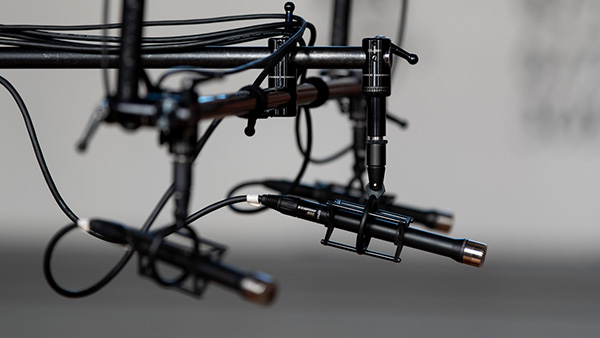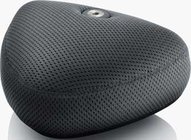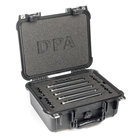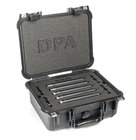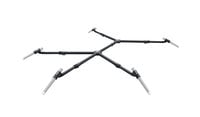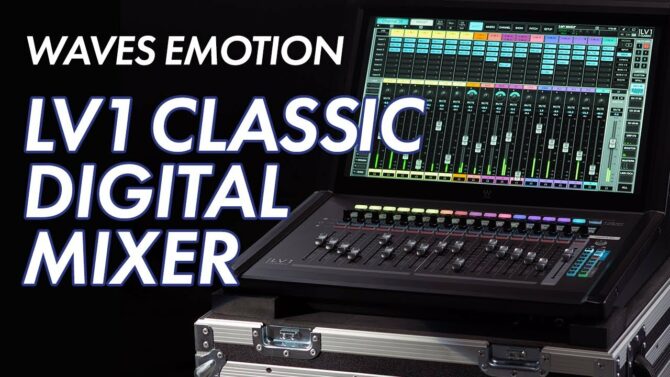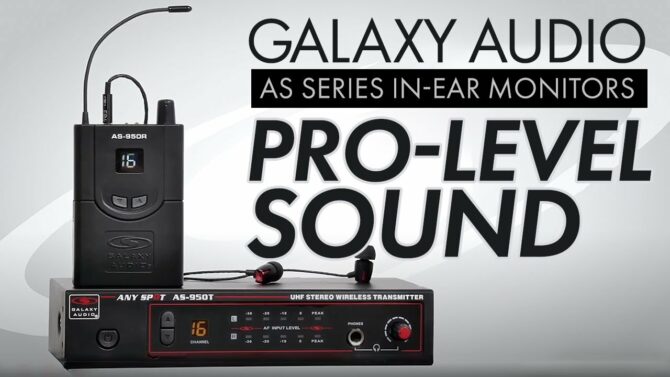This article defines various forms of immersive audio and offers a few tips on how to ensure your immersive recordings work.
What is Immersive Audio?
Immersive means to be totally surrounded by something. However, immersive sound Definition:
Definition:
A type of 3D sound, similar but not the same as Surround Sound, in that the imaging is created through algorithms rather than discrete channels. is more than that. It’s also envelopment. Envelopment is related to spatial Definition:
Definition:
Referring to placement in a space. information, the perception of spatialness.
Listener immersion is partly achieved by receiving sound from any direction, but it involves more than that. The channels may contain information about the same sound source but from different angles. If all channels play precisely the same sound (multichannel mono Definition:
Definition:
Short for Monophonic. An audio program, recording, or hardware device/software routine that produces or processes a signal with only one channel.), then there is no envelopment.
Immersive audio was formally referred to as surround Definition:
Definition:
Multiple speakers place around a listening area to create an enveloping soundscape. sound or 3D audio. While traditional surround sound contains 5.1 Definition:
Definition:
Surround sound with 5 speakers plus 1 subwoofer. channels (five with full bandwidth Definition:
Definition:
A range of frequencies that a device can generate, reproduce, or process. This usually implies little or no alteration within the range. and one band-limited, low-frequency Definition:
Definition:
A value, expressed in Hertz, that indicates how many cycles of a periodic signal occur in one second. channel Definition:
Definition:
1. In radio, television, citizen's band radio, and other wireless communications modes, a specific frequency for communication. 2. In mixers and video, an input or output signal path with controls. 3. In MIDI, one of 16 data paths.), the new formats can be 7.1 Definition:
Definition:
Surround sound with 7 speakers plus 1 subwoofer..4 (seven channels in the base layer, one low-frequency effect channel and four height channels), 9.1 Definition:
Definition:
Surround sound with 9 speakers plus 1 subwoofer..4, or Dolby Atmos Definition:
Definition:
A Dolby surround sound technology with added height channels for three dimensional immersion effects., Auro 3D, or in Japan: 22.2 (10 channels in the base layer, nine channels in an upper layer, three channels in a lower layer, and two low-frequency effects channels).
How is Immersive Audio Made?
Several recording and mixing techniques are used in the creation of immersive audio. Film mixes for Atmos and formats like it are usually a mix of everything possible: mono sources, stereo Definition:
Definition:
A two channel signal simulating a sound space, typically played through two speakers. sources, and multi-channel recordings with spatial information. By adding sound objects to this, it becomes possible to hear spatial incidents, such as the placement of an incoming helicopter at an angle to the rear. Timecode and coordinates determine where and when the object appears in the rendering Definition:
Definition:
A computer process of applying edits and modifications to video, audio waveforms, and/or images to create a finished file or product., rumbling over the audience's head.
Ambisonics / Higher-Order Ambisonics
Some audio professionals use first-order or higher-order ambisonics Definition:
Definition:
A multichannel recording technique that records sound vector information in a spherical (3-dimensional, Immersive) format, which can later be decoded to any format. Also "Sound Field" recording.. First-order ambisonics is based on a so-called A-format microphone array (four tetrahedral oriented cardioid Definition:
Definition:
A microphone's heart-shaped directional pickup pattern. microphones), which is reformatted to B-format Definition:
Definition:
An audio format for 3-D audio based on Tetrahedral or Soundfield recording. virtually, with three bi-directional Definition:
Definition:
A microphone or speaker that operates in two directions simultaneously, with one side "in phase" and the other 180-degrees out of phase. Also called "figure-8." mics and one omnidirectional Definition:
Definition:
A pattern describing a microphone, radio antenna, or loudspeaker that radiates or picks up in all directions equally.. Higher-order ambisonics typically consists of a physical sphere with a diameter of 10-20 cm, on which 8, 16, 32 or 64 microphones are placed and evenly distributed. By mixing the signals, you can get sharper characteristics, which can reproduce the impression of direction in a clearer way. The technique provides high precision, requiring the listener to sit in the sweet spot. Virtually all other positions result in the sound from the nearest speaker without the great feeling of immersion or envelopment. This technique works well in virtual reality, where you are always in the center.

Spatial Recording
Other natural recording methods include formats with a large distance between the recording microphones. Norwegian sound engineer, Morten Lindberg (2L), who makes fantastic Grammy-winning immersive recordings, uses an array with seven omnidirectional microphones as the base layer and four omnidirectional microphones for the height layer. There is a minimum of one meter between the microphones, which generates a lot of uncorrelated sound, and that makes a listener feel enveloped by the sound. It’s a technique that is not only suitable for music but also for establishing soundscapes that can be listened to over a larger area.
De-Correlation
In some mixes, the sound originates from a few channels. Channels like upper-layer channels are derived by de-correlation. This involves special processing of the audio. It also applies to large format setups (sound reinforcement/concerts) because it reduces the undesired effect of comb-filtering.
Loudspeaker Setup vs. Microphone Setup
Often, it’s the loudspeaker setup that determines the initial microphone configuration. So, a simple miking technique is to place one microphone for each loudspeaker/channel. The question is how to achieve the most prioritized parameters – precision, coverage, immersion, envelopment, spectral balance Definition:
Definition:
The ratio of a stereo signal's left channel to its right channel, often controlled with a knob on a mixer., or any other parameter. It is extremely difficult to achieve all these parameters at the same time.
The best way forward is to experiment and try out different configurations. As mentioned above, directional microphones positioned close together can provide a good sense of source position (low geometric distortion Definition:
Definition:
A change in an electronic or acoustic signal's waveform. This can undesirable if it impacts signal quality, or desirable when used for creative signal processing. in the sweet spot). This is usually the preferred technique for the scientific reproduction of soundscapes and the like.
Spaced microphones provide more envelopment. Both directional microphones and omnidirectional microphones can be used. However, omnidirectional microphones are excellent for low-frequency pickup Definition:
Definition:
1. Transducer attached to a musical instrument that converts mechanical vibrations into an electrical signal for recording or amplification. 2. The part of a phonograph that translates mechanical motion from grooves into electrical signals for subsequent amplification., which can be enjoyed if all loudspeakers have a decent low-frequency response. If some degree of directivity Definition:
Definition:
The pattern of energy sent or received by a microphone, speaker, or antenna. is desired, it is possible to use omnidirectional microphones with acoustic pressure equalizers.
Tips for Immersive Recording
- Adjust the gain
 Definition:
Definition:
The amount of amplification provided by an amplifier circuit, expressed in dB or numerically as in "3X" = "3 times". of each microphone in an array to exhibit the same sensitivity Definition:
Definition:
In transducers and amplifiers, the how much input energy is needed to produce the desired output. during recording - Larger spacing between microphones provides more envelopment but, in some cases, less directional precision
- If the loudspeakers are spaced far apart, the microphones need to be distanced as well



